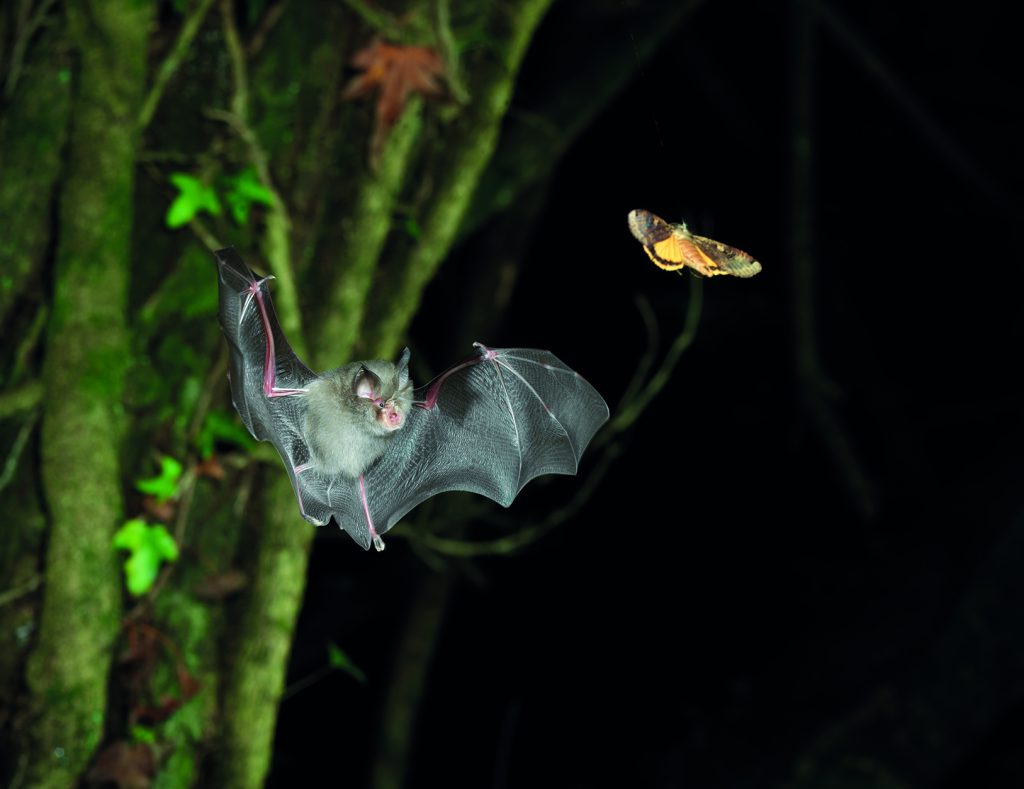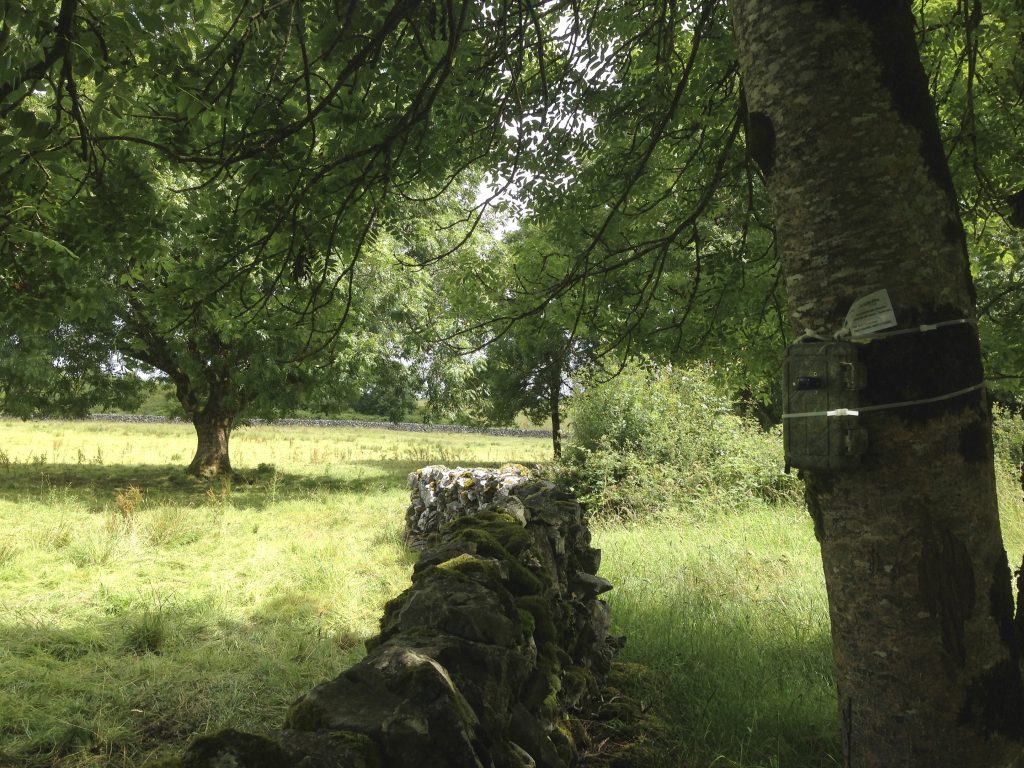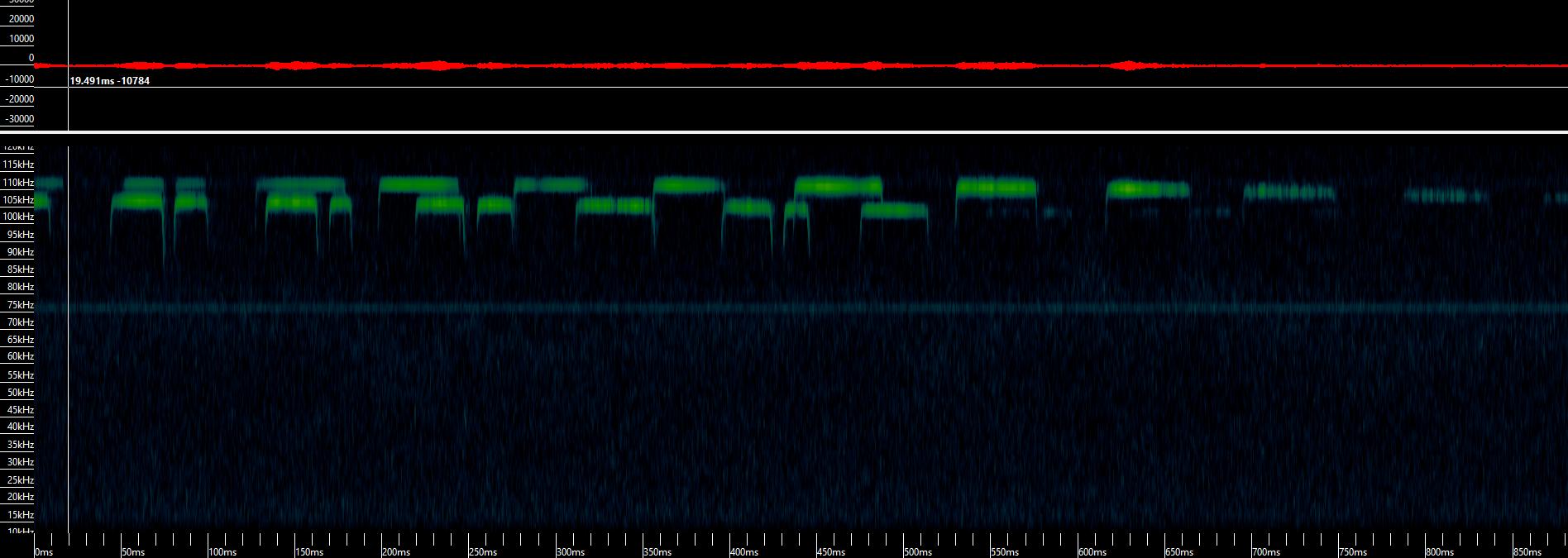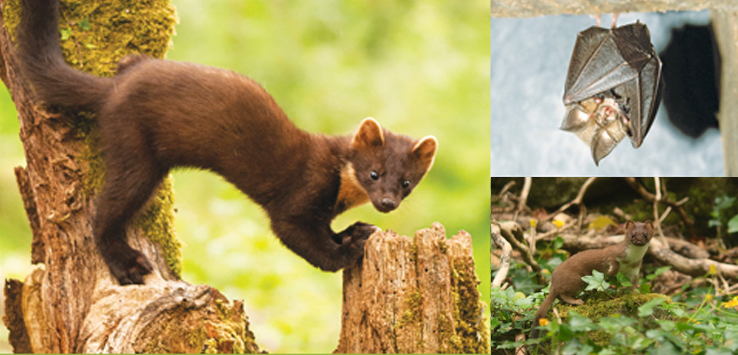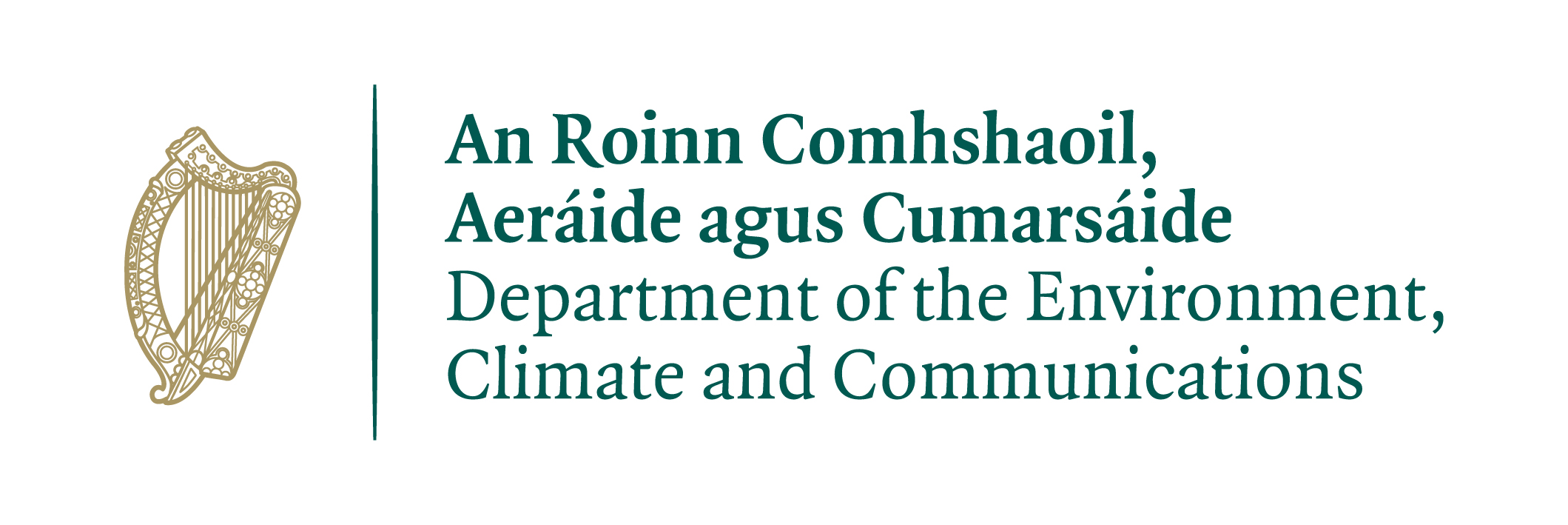News | Blog | About the excitement of a lesser horseshoe bat call – Volunteer Blog
17th May 2019What has got me standing here, placing nets on the ground to collect Lesser Horseshoe bat droppings in a maternity roost on a mid-summer night? Fair question…
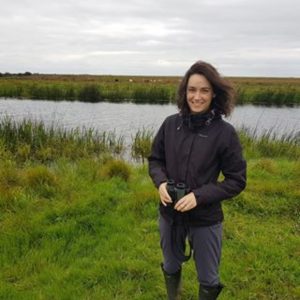
Margaux Pierrel
Back to early 2017. Freshly arrived from France, I had decided to move to Galway out of the blue to find a job in ecology/nature conservation/animal protection. So, there I found myself, on my own, in a foreign country and fairly shy to meet new people on top of that.
On 8 February, I got out of my comfort zone and attended a talk about ‘Pine Marten – living in harmony with a native species’. The speaker was Ruth Hanniffy, Vincent Wildlife Trust’s Ireland Projects Support Officer. Ruth gave a brilliant talk with amazing footage of the multi-skilled, cute-faced mustelid. Encouraged by the friendly atmosphere she got the audience into, I went to have a chat with her at the end. Ruth is the nicest person. She gave me plenty of advice and links to check for job opportunities but, most importantly, she took me seriously. A couple of days later, I emailed her to thank her again. I had just made the first step of a big change in my life.
Following the talk, Ruth and I kept regularly in touch and in 2018, she offered me the chance to volunteer for Vincent Wildlife Trust on a project she was particularly interested in: the monitoring of lesser horseshoe bats in the surroundings of a maternity roost owned by the Trust, near Fiddaun Castle in Clare. This species of bats is quite rare in Ireland, with a nationwide population restricted to only six western counties (Cork, Kerry, Limerick, Clare, Galway and Mayo).
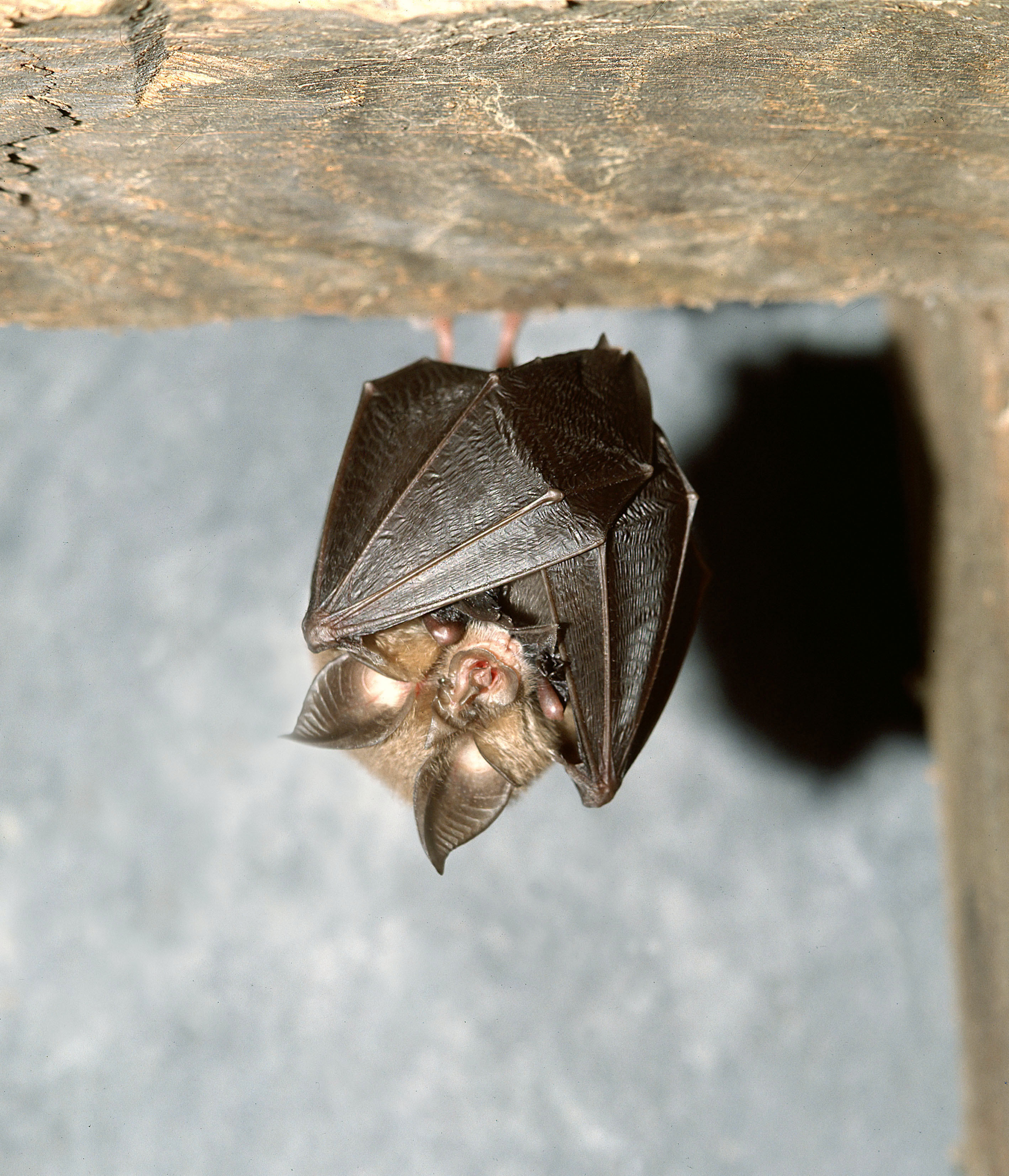
Photo: Lesser horseshoe bat ©Frank Greenaway
We scheduled a day to meet with Ruth and another volunteer, where we were told everything there is to know about the project and the equipment we were going to use. Having moved to Clare myself (I was back then a guide for the National Parks and Wildlife Service), I was delighted to accept the offer.
The volunteer activity consisted in placing passive bat detectors around the roost (up to 2km) to understand where the lesser horseshoe bats were foraging for insects.
We were responsible for changing the locations of three detectors throughout the fields, relying on Ruth’s sixth sense to predict where we might pick up some sounds. They were set to pick up any bat calls from sunset to sunrise, and the data collected would then be sent to Ruth for further analysis, especially species identification. I remember the first time Ruth, using our Whatsapp group, sent us a message with the first lesser horseshoe recording. Oh, happy day!
I participated in the project almost every week for six months and met great people who were just as enthusiastic about bats and wildlife as I was. Going to the project was always a pleasure and it became even more interesting when Ruth gave me more responsibilities, like monitoring the group of volunteers myself when she went on holidays or trusting me with detector location.
The best day of the whole volunteering was definitely when Ruth and I did a dusk emergence count outside the famous bat roost. As usual, in the late afternoon, we set the passive detectors at their new location then we headed off to the small building. An emergence count consists in recording every bat that exits the roost in search of food after sunset. It gives ecologists a good approximation of bat numbers inside the roost without causing them any disturbance by getting inside during the day when they are sleeping. In our case, the bats started to get out shortly after sunset in a vibrant orchestra. With our heterodyne bat detectors set to 110kHz – a small box converting the ultrasonic bat calls into a sound which is audible to the human hear – the lesser horseshoe bat calls were a series of round hypnotic clicking tones, an exquisite and complex melody of echolocation, a ‘Bathoven’ symphony in the perfumed and silent night…
Lesser horseshoe bat echolocation call: ©Michel Barataud
Once assured all the bats had left, we carefully entered the roost to check it as Ruth wanted to place a few pieces of equipment inside – such as humidity tags or nets to collect droppings for a PhD student.
One year after the project started, I secured a job as an ecologist in a consultancy in Clare. There is no doubt my volunteer experience with VWT helped me to get this and encouraged me in pursuing my dream of a career in nature conservation and public awareness.
If you recognised a bit of yourself in my words, why not get involved with Vincent Wildlife Trust or a local nature organisation near you?! Biodiversity – including bats – is at great peril, threatened by habitat loss, pollution, intensive agriculture, invasive species, climate change, etc, so an extra pair of savvy hands is always useful! Easy tips can also be found online on how to have a bat-friendly garden or how to build your very own bat box for example.
The tiny horseshoes will be grateful for your effort!
Margaux, Bat-Fan.
Margaux Pierrel, Volunteer, Fiddaun Detector Study, Galway/Clare


